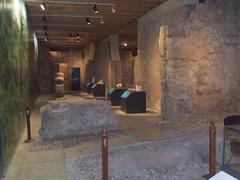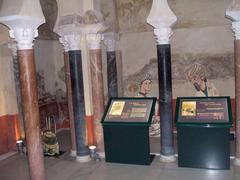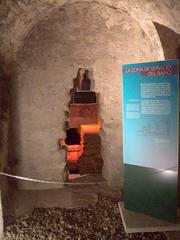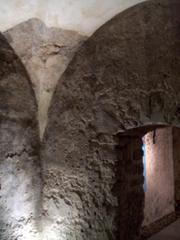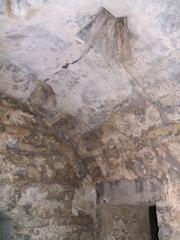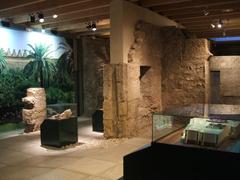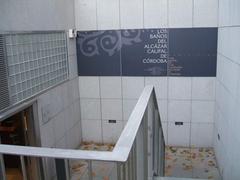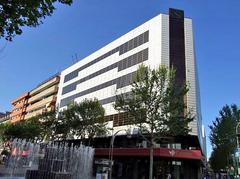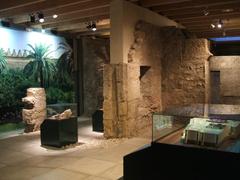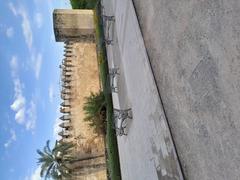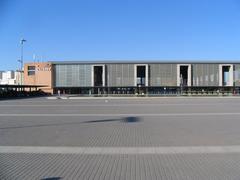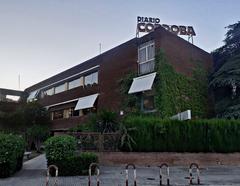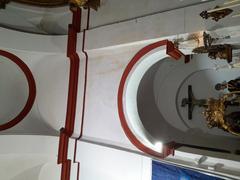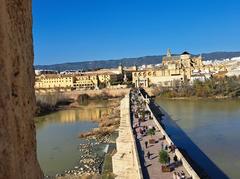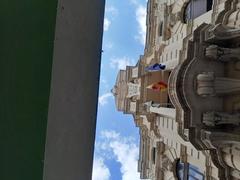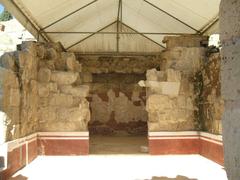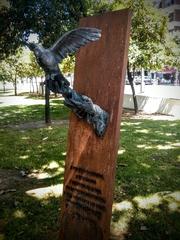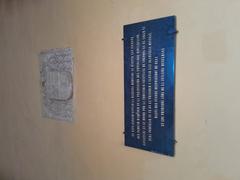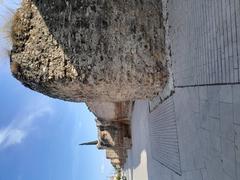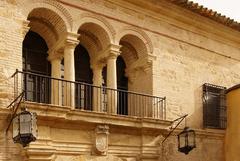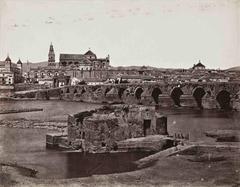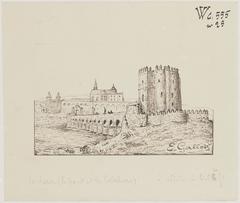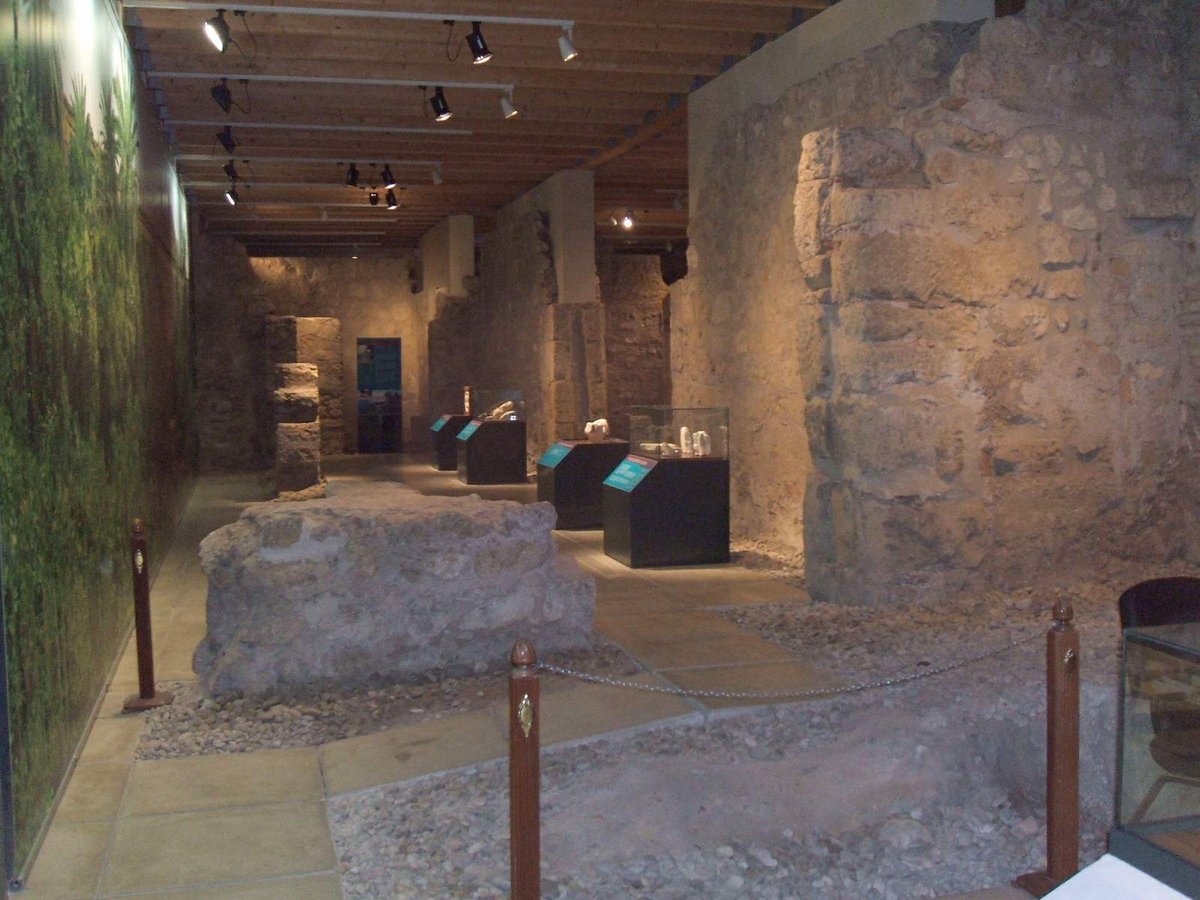
Alcázar of the Caliphs: Visiting Hours, Tickets, and Historical Sites in Córdoba
Date: 14/06/2025
Introduction
Nestled in the heart of Córdoba, Spain, the Alcázar of the Caliphs—also known as the Alcázar de los Reyes Cristianos—is a historically rich fortress-palace that captures the city’s layered past. This iconic monument reflects centuries of cultural evolution, from its origins as an Islamic palace to its transformation under Christian monarchs. The Alcázar bears witness to Córdoba’s prominence during the Umayyad Caliphate and later as a crucial seat of Christian rule. With its striking towers, lush Mudéjar gardens, and interiors adorned with Roman mosaics and Islamic baths, the Alcázar invites visitors to explore a living tapestry of architectural and historical significance.
This comprehensive guide offers detailed information on the Alcázar’s history, architectural highlights, visiting hours, ticketing, tours, accessibility, and practical tips—empowering travelers to plan a memorable visit to one of Andalusia’s most treasured landmarks.
Table of Contents
- History and Origins
- Architectural Evolution
- Cultural Significance
- Visiting Information
- What to See: Highlights
- Events, Accessibility, and Practical Tips
- Frequently Asked Questions (FAQ)
- Summary and Visit Tips
- References and Further Reading
History and Origins
The Alcázar of the Caliphs stands as a testament to Córdoba’s golden age as the capital of Al-Andalus. Its foundations date back to the 8th century, following the Islamic conquest of the Iberian Peninsula. Abd al-Rahman I established the complex as a royal residence and seat of power for the Umayyad dynasty, and later, Abd al-Rahman III expanded it after proclaiming himself Caliph in 929 CE (artencordoba.com). Strategically positioned near the Guadalquivir River and the Great Mosque, the Alcázar was integral to Córdoba’s political and cultural life.
After Christian forces reconquered Córdoba in 1236 under Ferdinand III, the palace was adapted, expanded, and partially rebuilt. The 14th-century Alcázar de los Reyes Cristianos merged Islamic, Gothic, and Mudéjar architectural styles, serving as a royal residence, military fortress, and later, the seat of the Spanish Inquisition (turismodecordoba.org).
Architectural Evolution
Layers of History
The Alcázar is a palimpsest of Roman, Visigothic, Islamic, and Christian influences:
- Roman Era: Remnants of Roman foundations, columns, and mosaics remain visible, especially within the Mosaics Hall (artencordoba.com).
- Islamic Period: The Umayyad caliphs expanded the palace into a luxurious complex with horseshoe arches, intricate tilework, and elaborate gardens. The Caliphal Baths survive as a rare testament to this period (wikipedia.org).
- Christian Reconquest: The fortress was adapted with Gothic, Renaissance, and Mudéjar elements. Towering structures, fortified walls, and new halls were added—culminating in the Alcázar de los Reyes Cristianos.
Key Architectural Features
- Towers: Four prominent towers (Tower of Homage, Tower of the Inquisition, Tower of the Dove, Tower of the Lions) define the fortress. The Tower of Homage is famed for the meeting between Columbus and the Catholic Monarchs (espanaguide.com).
- Gardens: The Mudéjar-style gardens feature symmetrical layouts, reflecting pools, aromatic orange and lemon trees, and ornate fountains—evoking the Islamic concept of paradise (headout.com).
- Interiors: Highlights include the Mosaics Hall with Roman mosaics, preserved Caliphal Baths, and ceremonial halls that blend artifacts from various eras (spain-holiday.com).
Cultural Significance
The Alcázar served as the administrative heart of Al-Andalus and later as the seat of Christian monarchs. It was here that Ferdinand and Isabella planned the final campaign against Granada and received Columbus before his first voyage. The site became the tribunal and prison of the Spanish Inquisition—a legacy still visible in the Tower of the Inquisition (espanaguide.com). Its diverse architectural layers and artistic motifs exemplify centuries of coexistence and cultural adaptation, earning it recognition as a UNESCO World Heritage Site (visit-andalucia.com).
Visiting Information
Visiting Hours
- April to September: 9:00 AM – 9:00 PM (last entry 8:30 PM)
- October to March: 9:00 AM – 6:30 PM (last entry 6:00 PM)
- Closed on some holidays – always check the official website before your visit.
Tickets and Prices
- General Admission: €5
- Reduced Tickets: €3 (EU citizens 18–25)
- Free Entry: Children under 18, Córdoba residents, and on certain cultural days
Tickets can be purchased online in advance or at the entrance. Online booking is highly recommended, especially during peak seasons (official Alcázar website).
Guided Tours
- Guided tours are available in several languages and offer deeper historical context.
- Audio guides and virtual tours are also offered for self-guided exploration (travelcordoba.com).
Accessibility
- Gardens and main halls: Wheelchair accessible
- Towers and ramparts: Not accessible due to stairs and uneven surfaces
- Restrooms: Accessible facilities available
For specific accessibility needs, contact the monument in advance at +34 957 420 151 or email.
What to See: Highlights
Towers and Walls
- Tower of the Lions: Offers panoramic views of Córdoba’s historic center and the Guadalquivir River (travelcordoba.com).
- Tower of the Inquisition: Remnant of the fortress’s use as a tribunal and prison (itinerartis.com).
- Walls: Walkways along the crenellated walls provide impressive vistas and insight into the Alcázar’s defensive design (andalucia.com).
Gardens
- Main Gardens: Spanning 55,000 square meters, the gardens feature geometric layouts, reflecting pools, fountains, and lush plantings—best experienced in spring during the Festival de los Patios (itinerartis.com).
- Statues and Fountains: Statues of the Catholic Monarchs and Columbus, as well as numerous fountains, enhance the tranquil atmosphere.
Interior Spaces
- Mosaic Room: Houses exquisite Roman mosaics dating from the 2nd and 3rd centuries (travelcordoba.com).
- Royal Baths: Preserved Islamic baths with vaulted ceilings and star-shaped skylights (andalucia.com).
- Ceremonial Halls and Chapels: Display artifacts and architectural details from different historical periods (spain-holiday.com).
Archaeological Remains
- Roman foundations and columns are visible throughout the complex (itinerartis.com).
- Islamic motifs persist in the decorative elements and garden layouts (travelcordoba.com).
Views and Photography
- Best panoramic views from the towers and ramparts, with excellent photo opportunities of the gardens and historic skyline (travelcordoba.com).
Events, Accessibility, and Practical Tips
- Special Events: The Alcázar hosts seasonal concerts, flower festivals, and occasional night tours. Consult the official events calendar.
- Practical Tips:
- Visit early morning or late afternoon for fewer crowds and optimal lighting.
- Wear comfortable shoes for uneven surfaces and stairs.
- Photography is allowed, but flash may be restricted in sensitive areas.
- No on-site cafes—bring water and plan meals nearby.
Frequently Asked Questions (FAQ)
Q: What are the Alcázar’s visiting hours?
A: April–September: 9:00 AM–9:00 PM; October–March: 9:00 AM–6:30 PM. Last entry 30 minutes before closing.
Q: How much do tickets cost?
A: €5 general admission, €3 reduced, free for children under 18 and local residents.
Q: Is the Alcázar accessible?
A: Gardens and main halls are accessible; towers require stairs.
Q: Are guided tours available?
A: Yes, in multiple languages, with audio guide options.
Q: Can I buy tickets online?
A: Yes, online purchase is recommended to avoid queues.
Q: What else can I visit nearby?
A: The Mosque-Cathedral, Roman Bridge, and Jewish Quarter are within walking distance.
Summary and Visit Tips
The Alcázar of the Caliphs in Córdoba is a remarkable symbol of the city’s rich, multicultural history, where Roman, Islamic, and Christian legacies are woven into one extraordinary monument. Its towers, gardens, mosaics, and baths offer a compelling journey through centuries of art, architecture, and power. With flexible visiting hours, affordable tickets, guided tours, and partial accessibility, the Alcázar is suitable for all travelers. Its proximity to other major landmarks makes it an essential part of any Córdoba itinerary.
To enhance your visit, check the latest information on hours and tickets through official sources (artencordoba.com, turismodecordoba.org), and consider using digital tools like the Audiala app for interactive tours. Whether you’re a history enthusiast, cultural explorer, or casual visitor, the Alcázar promises an immersive experience in the heart of Andalusia.
References and Further Reading
- Alcázar of the Caliphs: A Complete Guide to Visiting Hours, Tickets, and Córdoba’s Historic Gem, 2024, Art en Córdoba (artencordoba.com)
- Alcázar of Córdoba: Visiting Hours, Tickets, and Historical Highlights, 2024, Art en Córdoba (artencordoba.com)
- Alcázar of Córdoba, Wikipedia (wikipedia.org)
- Alcázar de los Reyes Cristianos Visiting Hours, Tickets & Guide, 2024, Turismo de Córdoba (turismodecordoba.org)
- Alcázar of Córdoba Visiting Hours, Tickets, and Highlights: A Complete Guide, 2024, Travel Córdoba (travelcordoba.com)
- Alcázar of Córdoba, España Guide (espanaguide.com)
- Alcázar of Córdoba, Andalucia.com (andalucia.com)
- Alcázar of Córdoba, Itinerartis (itinerartis.com)
